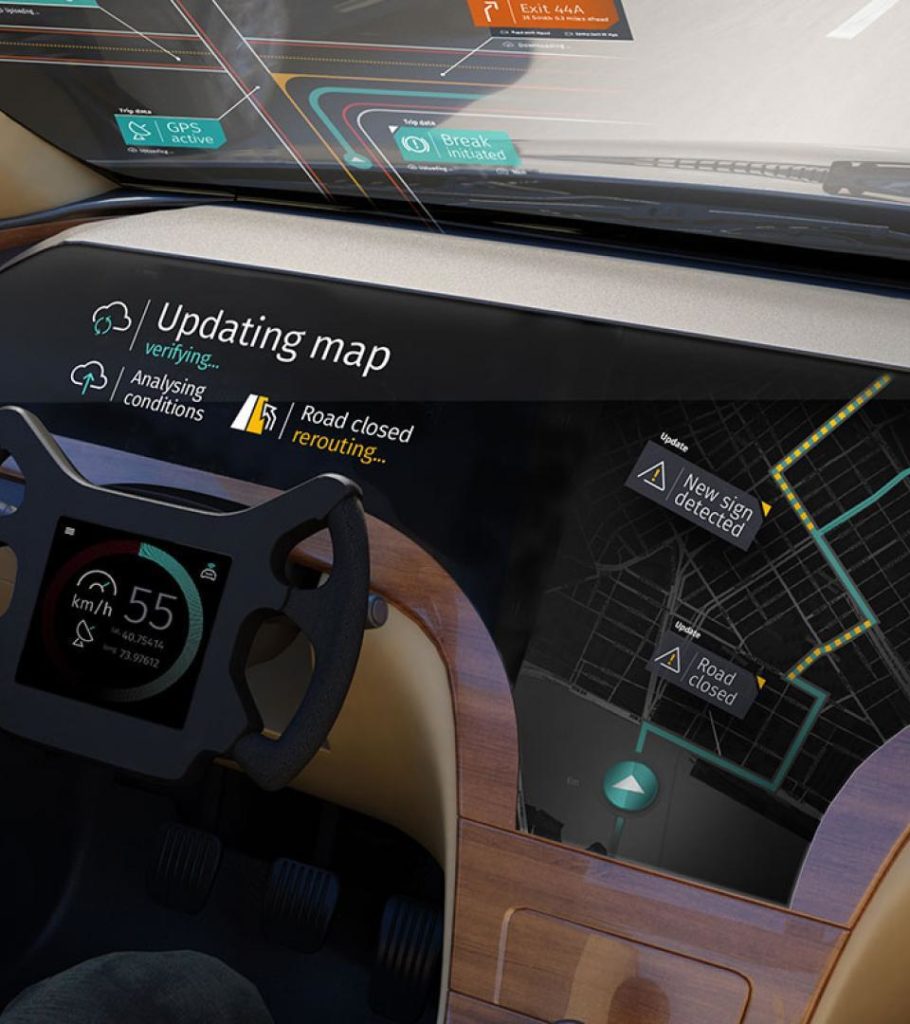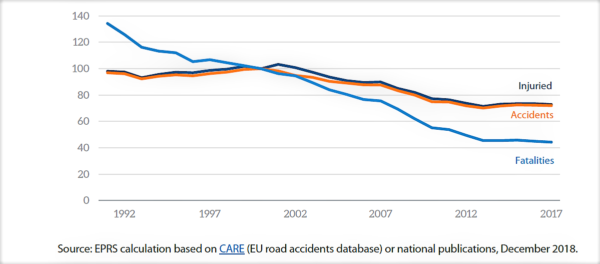Scenario
As published by the European Parliament, between 1991 and 2017, the EU has experienced a remarkable improvement in terms of road safety. “In 2017, the number of people who lost their lives on EU roads was close to 400 less than in 2016, and more than 6,200 less than in 2010. While some Member States continue to make progress in terms of road safety and road fatalities, and rates at EU level show a reduction of around 2 % for the second year in a row, reaching the EU objective of halving road fatalities between 2010 and 2020 may prove difficult”.
Step 1: The European Parliament
Faced with the road scenario, the European Parliament is continuously working on safety standards. As a first deliverable for connected mobility, the Commission has adopted new rules intensifying the deployment of Intelligent Transport Co-operative Systems (C-ITS) on Europe’s roads. C-ITS allow vehicles to ‘talk’ to each other, to the road infrastructure and to other road users, for example, about dangerous situations, road works and the synchronisation of traffic lights, making road transport safer, cleaner and more efficient.
In June of this year, at the European ITS Congress, the largest European event on intelligent mobility and digitization of transport, announcements were made about the importance of data sharing for the benefit of road safety. In 2020, car manufacturers, EU member states and navigation system providers will have to share their data.
Step 2: Team Participants
Automotive companies are an important and necessary partner in achieving the goal of reducing road casualties. Therefore, vehicle manufacturers in partnership with national transport authorities and service providers have agreed on a first pilot, the EU Data Task Force, to exchange and combine data on road conditions in real time. This project brings the countries Finland, Netherlands, Germany, Luxembourg and Spain as well as the automotive companies BMW, Ford, Volvo and Mercedes Benz and furthermore the navigation system suppliers HERE Europe and Tom Tom together.
The main idea of the pilot is that from a neutral platform based on the cloud, participants share data between brands in order to test and improve traffic safety and services. For example, data regarding icy roads, oncoming drivers, poor visibility and emergency lane breakdowns would be shared instantly with road authorities and other vehicles on the same route. This means that drivers will be able to adapt their driving behavior to avoid accidents and delays on the routes.
Looking towards Safe and Efficient Mobility
We are on the way of perfecting the shared data system to avoid future dangers, but today it is already pleasing that governments, private companies and service providers are united on the view of improving road safety.
The meeting of Step 1 and Step 2 is undoubtedly about to be a plan in which its stakeholders are not competitors, but partners who aim for the safety of road users.
If you want to know more, just go here.

